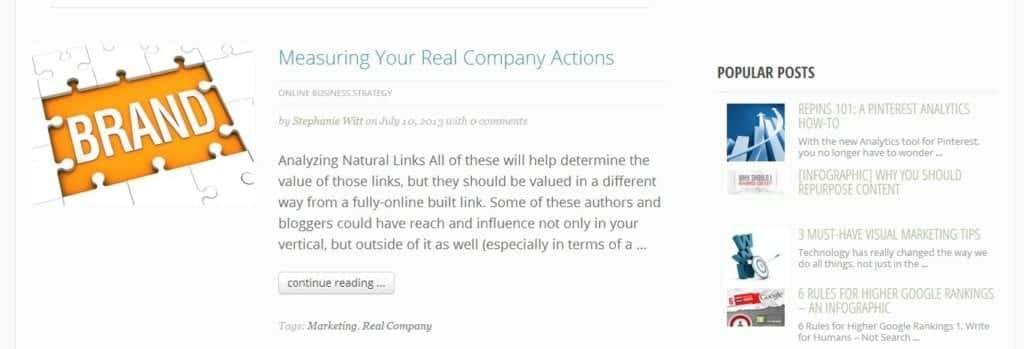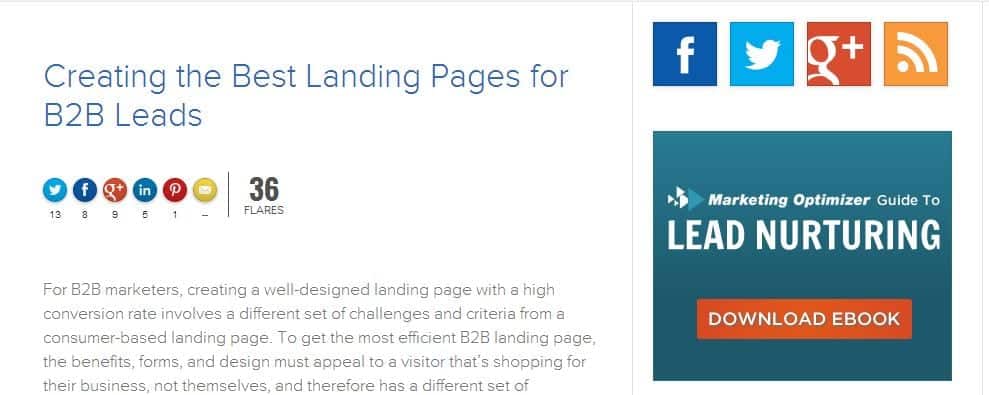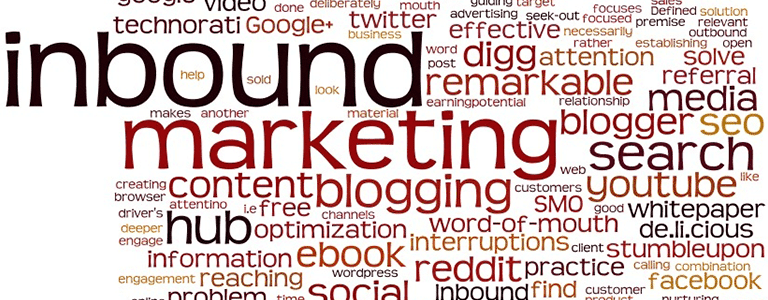Inbound marketing is the process of getting prospects to find out about your company or product, often before they are even in the purchasing stage of the sales process. By building up your marketing profile with great, relevant content that your current and future buyers will want to read, you are positioning yourself in your market as an expert industry leader, and are ultimately creating an awareness of and preference for your brand.
To learn more about inbound marketing in general, take a look at this earlier post: What is Inbound Marketing
THE BASICS OF B2B INBOUND MARKETING
CONTENT IS KING. Inbound marketing allows you to leverage the content you create as well as your calls-to-action to ultimately drive more business and revenue to your company. Keeping your content current and relevant is key in being able to leverage it as a marketing tool. You want to utilize mediums such as blog posts, whitepapers, infographics, eBooks and emails blasts to keep your content at the forefront, updated and fresh.
Another basic key factor in all inbound marketing strategies is CUSTOMER ENGAGEMENT. By developing the content that your potential buyers love, you are increasing the chances for customer engagement. A customer that’s engaged in your content is more likely to take action, including filling out a survey, form, sending an email or even making a phone call. With the advent of social medium engaged customers can also share your content through Likes, Pokes, Tweets, Posts, Flares, Shares, +1s, etc. It’s easier than ever to get your content out there and noticed.

There are many different ways to use inbound marketing, including blog posts.
FACTS ABOUT B2B MARKETING
B2B Marketing Companies are shifting their focus and budgets towards more inbound marketing. B2B marketers are now able to offer their potential customers more useful, relevant information in order to attract additional visitors to their site. In addition, they are able to interact with them at a higher level and build lasting relationships through being an information hub and communicating through social media. Some facts about B2B marketing include:
- 69% of B2B Companies are using some sort of social media
- 60% of B2B Companies have held virtual events or webinars
- 60% of B2B Companies are using search engine optimization tools to boot their results.

Social media can really spread awareness of your content…and your website.
BEGINNER TIPS FOR A SUCCESSFUL B2B MARKETING STRATEGY
TIP #1: Go through the necessary steps to build a “sales ready” website. This includes writing content, designing appropriate landing pages, and setting up secure conversion opportunities.
TIP #2: Keywords are the first building block in any successful marketing strategy. Make sure you take the time to research keywords that are relevant to your business and are searched for by your target audience. Having a long-tail keyword strategy in place will help as well.
TIP #3: Set Goals. You want to set realistic revenue goals so you have a benchmark to start from. Outline your revenue goals and make sure they relate to your overall marketing process.
TIP #4: Build Personas. Define your target market, their pain points and what key messages they will be able to relate to.
TIP #5: Create a Schedule and Inbound Plan (Kind of like a content calendar). For example, you will need to ask yourself:
- How often will you write and post for your blog?
- What social media channels will you use and how will you promote them?
- How will you develop a lead scoring plan and learn how to use it?
- How much content will you need to create and how will you offer it?
- How much will your sales team need to follow up and when?
Keeping a calendar of content will keep your website active with visitors.
FINAL THOUGHTS
B2B inbound marketing is the opposite of traditional marketing methods. Traditional techniques that include direct mail, telemarketing and trade shows, also known as outbound marketing, has become less effective as the importance of content and social media has increase. Visitors’ behaviors are different due to the changes in technology and purchasing styles. In order to keep up the changes in visitor attitudes and actions, inbound marketing is a must.
“Don’t let yesterday use too much of today.” – Author Unknown

